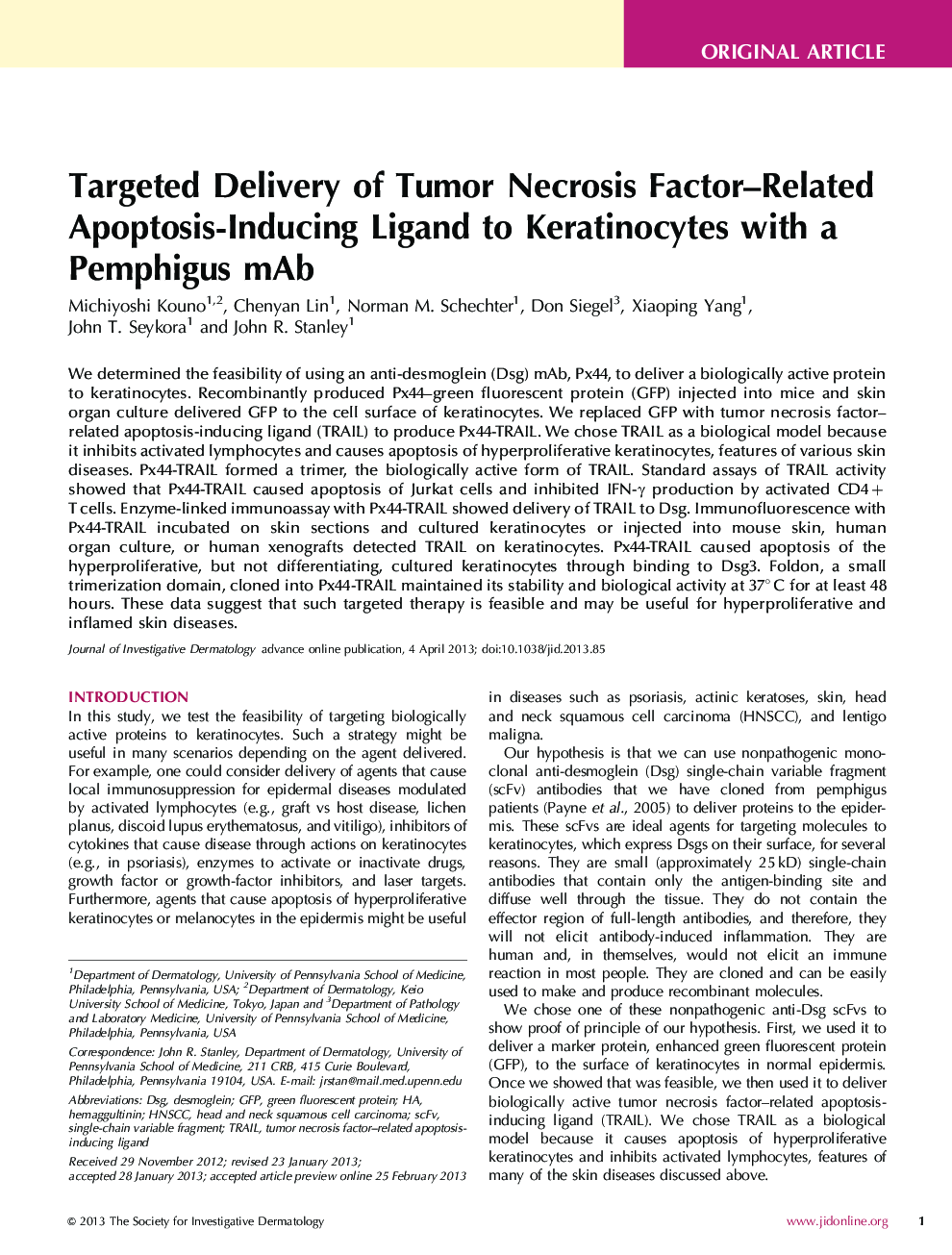| Article ID | Journal | Published Year | Pages | File Type |
|---|---|---|---|---|
| 6077362 | Journal of Investigative Dermatology | 2013 | 9 Pages |
Abstract
We determined the feasibility of using an anti-desmoglein (Dsg) mAb, Px44, to deliver a biologically active protein to keratinocytes. Recombinantly produced Px44-green fluorescent protein (GFP) injected into mice and skin organ culture delivered GFP to the cell surface of keratinocytes. We replaced GFP with tumor necrosis factor-related apoptosis-inducing ligand (TRAIL) to produce Px44-TRAIL. We chose TRAIL as a biological model because it inhibits activated lymphocytes and causes apoptosis of hyperproliferative keratinocytes, features of various skin diseases. Px44-TRAIL formed a trimer, the biologically active form of TRAIL. Standard assays of TRAIL activity showed that Px44-TRAIL caused apoptosis of Jurkat cells and inhibited IFN-γ production by activated CD4+ T cells. Enzyme-linked immunoassay with Px44-TRAIL showed delivery of TRAIL to Dsg. Immunofluorescence with Px44-TRAIL incubated on skin sections and cultured keratinocytes or injected into mouse skin, human organ culture, or human xenografts detected TRAIL on keratinocytes. Px44-TRAIL caused apoptosis of the hyperproliferative, but not differentiating, cultured keratinocytes through binding to Dsg3. Foldon, a small trimerization domain, cloned into Px44-TRAIL maintained its stability and biological activity at 37° C for at least 48 hours. These data suggest that such targeted therapy is feasible and may be useful for hyperproliferative and inflamed skin diseases.
Related Topics
Health Sciences
Medicine and Dentistry
Dermatology
Authors
Michiyoshi Kouno, Chenyan Lin, Norman M. Schechter, Don Siegel, Xiaoping Yang, John T. Seykora, John R. Stanley,
